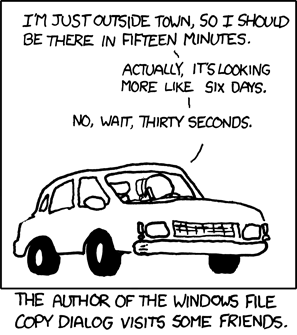Microsoft Teams Optimization
- Starts here https://youtu.be/UcEmqQjdQUY?t=2196
- Optimizing Teams requirements
- Delivery controller 1906.2 and newer
- VDA 1906.2 and newer
- Windows 10 x64 1906 - 1909
- Windows 2012 R2 and newer
- BCR_x64.msi
- More info in Citrix Docs
- High-Level Architecture https://youtu.be/UcEmqQjdQUY?t=2380
- Demo of a video call between the Netherlands and India both unoptimized and optimized https://youtu.be/UcEmqQjdQUY?t=2537
- Citrix TechZone article to learn about optimizing a variety of other Unified Communication solutions
- Browser Content Redirection renders whitelisted webpages on the endpoint and seamlessly feeds it back into the session. Offloading video rendering to endpoints provides both a great user experience as well as reduces backend VDA resources.
- Supported VDA browsers: Internet Explorer, Chrome, and Edge (new Chromium). Edge is in Tech Preview.
- Overview and configuration starts here https://youtu.be/UcEmqQjdQUY?t=2925
- Configuration and demo video of watching YouTube without and with BCR https://youtu.be/UcEmqQjdQUY?t=3250
- Learn more in Citrix Docs
- FSLogix will only save data for a single session. It does not support accessing multiple sessions and consolidating to its profile container. Use Citrix User Profile Manager to write back profile data to FSLogix when accessing more than one session at a time https://youtu.be/UcEmqQjdQUY?t=1985
Machine Creation Services (MCS)
- What is it and how does it work? https://youtu.be/UcEmqQjdQUY?t=656
- Machine Creation Services Input-Output (MCSIO). Deeper dive into MCS workings. It was revamped in version 1903 for on-prem hypervisors and Azure. Allows for placement of the master and caching disk on different storage. This allows you to use HDD (vs SSD) which scales higher (more users per machine) and provides better response time for users https://youtu.be/UcEmqQjdQUY?t=1239
- Publishing an app or desktop using Citrix Managed Desktop (Citrix TechZone) and MCS. Keep in mind Managed Desktops has a simplified web wizard vs Studio https://youtu.be/UcEmqQjdQUY?t=754
- Azure on-demand provisioning using MCS. It creates machines on power-on which means you only pay for what you use. Overview and demo using Apps and Desktop Service https://youtu.be/UcEmqQjdQUY?t=1073
- Background on image management and how it was historically done vs the app layering way https://youtu.be/UcEmqQjdQUY?t=1565
- Elastic layers https://youtu.be/UcEmqQjdQUY?t=1777
- User layers https://youtu.be/UcEmqQjdQUY?t=1820
- There are several types:
- Full
- Office 365
- Session Office 365
- Learn more in Citrix Tech Zone and check out this User Layer video (8 minutes).
- Use Azure Files to store layers https://youtu.be/UcEmqQjdQUY?t=1882 and see Citrix TechZone for more
Business Continuity
- Using Remote PC (access to the physical computer at your office). A look at the conceptual architectures available https://youtu.be/UcEmqQjdQUY?t=254

I hope this furthers your understanding of what's new in Citrix Virtual Apps and Desktops. Stay tuned for a bunch of exciting announcements in the second half of 2020.
Brian @sagelikebrian







